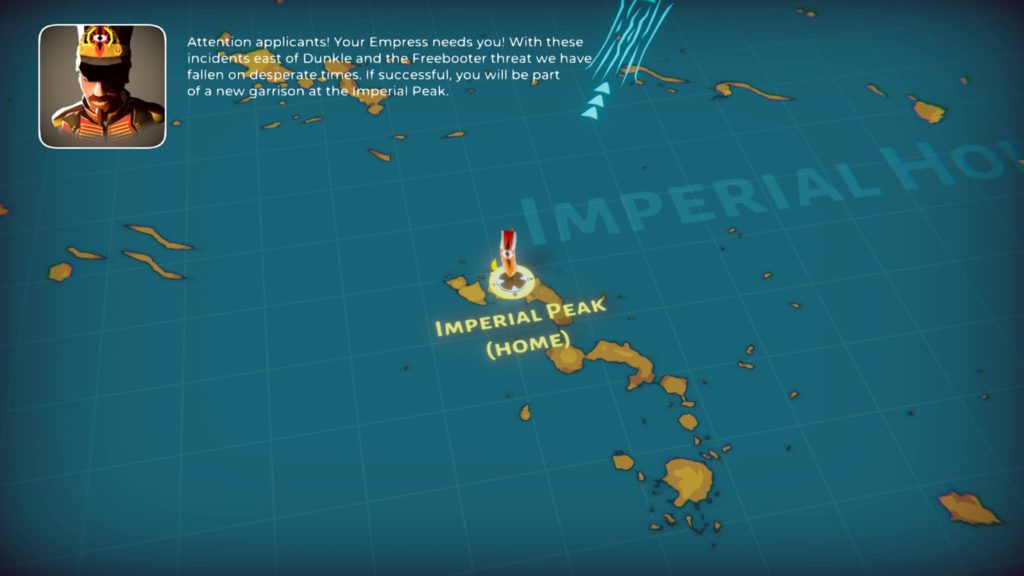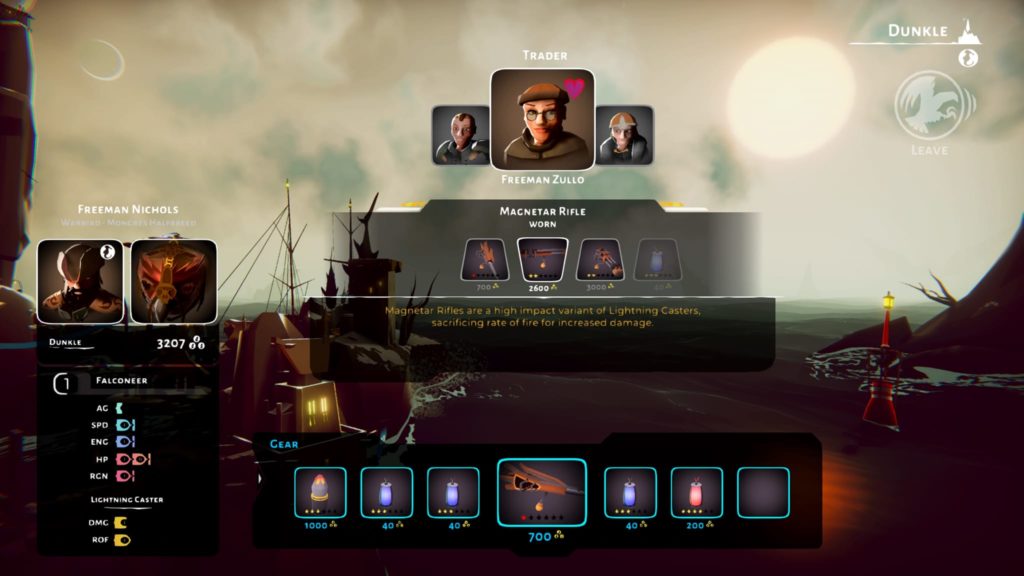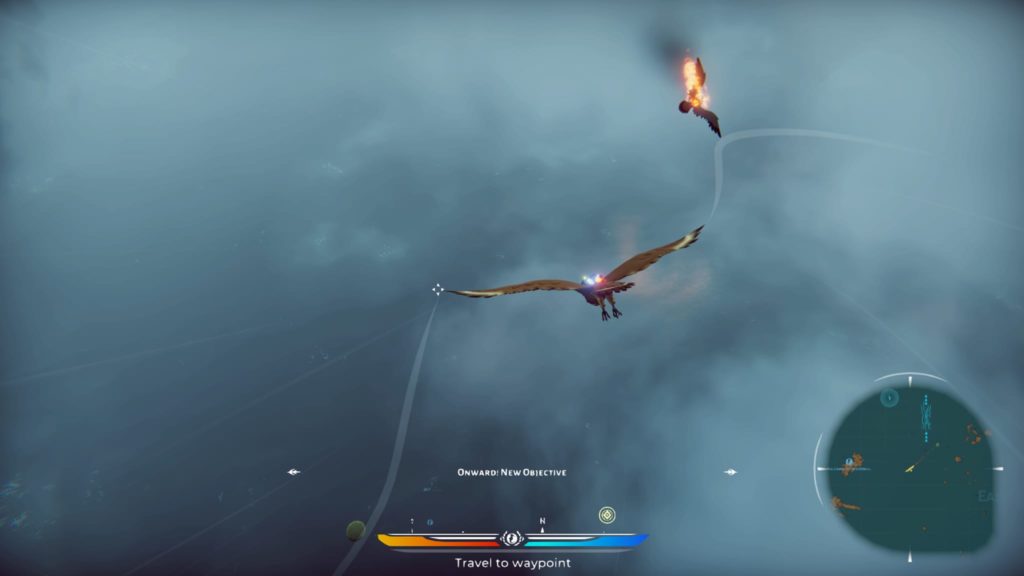The Falconeer: Warrior Edition Review – Flying through empty and unfriendly skies
The Falconeer: Warrior Edition Review
The Falconeer: Warrior Edition is the completed version of the BAFTA-nominated open-world rail shooter that was initially launched for the Xbox and PC in November 2020. Eight months later with their new DLC Edge of the World about to launch, the Warrior Edition is set to release for the Playstation consoles and Nintendo Switch.
Rail shooters like Panzer Dragoon, unless you’re really into the genre, are a relic of the past. Adding an open-world element to change things up a bit and a sprinkle of RPG mechanics and you have The Falconeer.
The Falconeer is the work of one Thomas Sala, which is quite impressive considering the scope of the project. The novelty is definitely intriguing, with the mystery of the world being the draw to get into the game. However, with the danger of open-world fatigue, would this new mechanic act to relieve us of it, or would it act as a cheap gimmick to get gamers interested?

It’s a bird, It’s a plane!
Similar to Maneater, The Falconeer takes quite a bit to get used to. You’ll certainly need some time to acclimatize to the whole control scheme – shooting, bombing, evasive maneuvers, and even the warbird’s unique controls such as picking up mines and catching fish to recover health. This alone could make or break the experience for some players and should be an immediate consideration.
There are many ways that the RPG elements and exploration of the open-world genre benefit the game. You could enhance your equipment by improving upon your current loadout and even add mutagens to improve your Warbird’s abilities. The character progression feels simpler than the much bigger AAA games, and I feel that most of the time in The Falconeer is best spent learning how to fly rather than spending it on a status screen, something you won’t be seeing much of throughout the game.

This open world is closed
The earlier chapters of The Falconeer allow for exploration of the world and while much of the intriguing lore is present, I find that the world’s unique visual style is the same thing that deters me from fully enjoying it.
You spend much of your time learning how to fly, including the intricacies of movement, but once you decide to do some exploration, you realize how desolate the land gets. It adds to the intrigue, but as much as I’d like to commend the ambition of this game, much of its open-world suffers because of how empty everything feels.
Once you get around to exploring the different islands and settlements that The Falconeer has to offer, there’s not a lot to watch out for. There are some picturesque views and stunning sights to be had, especially considering the view from above.
The world also offers a number of side missions and areas of interest, but much of my enjoyment is heavily reliant on my own imagination as I interact with the different storytellers and characters who are brought to life by such excellent voice acting.
There is a strange dichotomy of what I hear and what I see, and sadly… what I see does not amount to much.
I comment about the sparseness of the status screens on the previous section, and in a way, I wish I could bring them out more often. The only way you could access the status screen in The Falconeer is when you visit a shop that is located in different areas of the world. You could not check your equipment mid-flight, which means if you want more information, you have to find a settlement, land, and visit a shop to do that.
The same thing can be said of the map – there’s a mini-map that helps you navigate, but no button is assigned to view the map quickly. You would have to enter the pause screen and access the main map from there, which gets quite tedious.
Rewards the patient
If you take the time to learn the controls and take part in the world, there is definitely fun to be had in The Falconeer. After an hour of exploration, the world opens up its nuanced politics to be discovered. Permits need to be bought to seek out extra work as the need for currency increases as upgrades and items in the game are quite expensive. Radiant quests end up being repeated to earn extra shrapnel. This gets tedious after a while, as certain missions do require better mutagens and equipment to tackle.
Missions in The Falconeer can be repeated when you fail, especially the really frustrating delivery missions where pirates and other freebooters will easily knock the item you’re delivering. The tedious flying could be bypassed with different kinds of fast travel ranging from selecting previously discovered places on the map, riding jetstreams, and selecting the prompt to fast travel, which really helps when grinding for resources.
This is quite important due to the balance of the game being a little lopsided in terms of economy and difficulty, where some upgrades are quite expensive, and without those, the game tends to lean on the harder side of things.

Dogfights (or are they birdfights?) are possibly the biggest saving grace of The Falconeer as combat is quite fun and dynamic, especially when tackling either other warbirds, pirates, or sea creatures. The stronger you get, the better the combat plays out, and when you get wingmen on your mission, you can call on them to assist you to conquer the skies. As you gain levels and upgrade your mutagens and equipment, combat will get more fun, but even that novelty dies down pretty quickly once you return to the grind.
It also doesn’t help that the combat is simplistic since you only have one attack to use throughout. This may change as you upgrade your gear, but there’s a huge opportunity wasted by not employing warbird-based attacks to add more variety.
What we liked:
- Unique take on the rail shooter genre.
- Fantastic voice acting that brings the world to life.
- Simple character progression and equipment screens, allowing for more time exploring.
- Combat is dynamic and precise.
What we didn’t like:
- Controls take a little bit getting used to.
- The world feels barren and while it works for the lore, once the novelty fades, the game feels empty.
- Access to maps and status screens become tedious as they require extra steps such as needlessly visiting a settlement to do so.
- Requires repeating tedious radiant quests to collect currency to clear difficulty spikes.
- Delivery missions are frustrating.
Verdict: Wait for it.

The Falconeer takes between 8-12 hours to complete and a few hours more if you want to fully run through the open world. The novelty for this game quickly fades especially if you struggle with the flying aspect, which I most certainly did.
There are many aspects of the game to pique your interest – from the intriguing lore, the voice acting, and even combat. However, the bulk of the game really focuses on flying across an uninteresting landscape. There were many aspects that relieve the tedium, but that gets squandered with repetitive radiant quests and needless settlement visitation due to the lack of access to status screens.
The Falconeer suffers from a lopsided tug of war between creative elements and frustrating game mechanics. While I enjoyed the nuanced politics between the settlements especially as the game gets more difficult, the tedious side missions and radiant quests rob it of its sparkle. For every combat instance that you engage in, so many of them involve really frustrating delivery quests that can be easily failed and you have to repeat to progress. Sadly the balance tips towards the frustrating side and compounded by other issues, it’s hard to fully recommend The Falconeer at full price.
*The Falconeer: Warrior’s Edition has been reviewed on a PS5 with a review code provided by the publishers.




